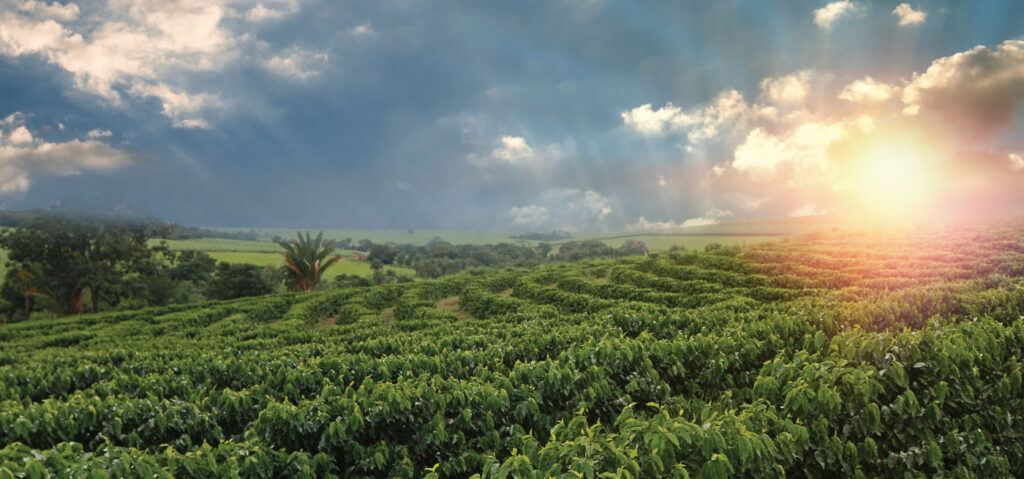Scaling Insights: Delivering Weather Forecasts to Millions of Indian Farmers
- May 26, 2025
- 5 minutes read
Welcome to the second instalment of our weather blog series, “From Sky to Soil,” where we explore PxD’s weather-related initiatives and their transformative impact on agriculture.
In case you missed it, check out our first post here.
In this blog, we spotlight our recent efforts to provide seasonal forecasts to millions of farmers across India, offering valuable lessons on scaling innovative solutions for the agricultural sector.

In 2023, the Ministry of Agriculture & Farmers Welfare (MoA&FW), in collaboration with the Development Innovation Lab India (DIL – India) at the University of Chicago Trust in India, signed a Memorandum of Understanding (MoU) to pilot, test, and scale innovations at the intersection of climate change, food security, and farmers’ welfare. As part of this initiative, PxD and DIL – India partnered to facilitate the digital delivery of weather forecasts, reaching nearly ten million farmers across India in 2024.
Evidence-Based Insights: How Weather Forecasts Empower Farmers
Climate change is disrupting weather patterns, making them less predictable. This makes it harder for farmers to plan their growing seasons and leaves them increasingly vulnerable to devastating crop losses.
Research highlights how timely and accurate forecasts can transform agricultural practices and livelihoods.
Farmers receiving SMS-based weather updates in Ghana adjusted planting and fertilizer applications to coincide with forecasted light rains. Farmers also actively shared weather forecasts, ensuring valuable information reached others in their community.
Delivering weather updates via SMS in Benin improved production efficiency, boosting labor productivity by about 66% and reducing labor costs by approximately 23%. These shifts demonstrate the role of weather information in enhancing agricultural profitability.
In Telangana, India, weather forecasts helped farmers make critical adjustments based on monsoon predictions. A longer-than-expected monsoon season led to an expansion of the land cultivated and made farmers more likely to invest in adding new crops. In contrast, if the forecast led to the realization of a shorter-than-expected monsoon, farmers reduced cultivation, scaled back investments in new crops and fertilizer, and diversified into profitable off-farm ventures.
These examples underline the immense potential of accurate weather forecasts. By enabling farmers to navigate climate uncertainties and optimize their resources, forecasts can drive sustainable agricultural practices and enhance livelihoods.
Piloting Monsoon Forecasts: Insights from 2024
Building on compelling evidence of the benefits of weather forecasts, PxD and DIL-India launched a large-scale pilot in 2024 to deliver critical weather information to farmers across five Indian states. The pilot provided farmers with two key types of forecasts:
- Monsoon Onset: Forecasted dates for the beginning of the monsoon season.
- Total Predicted Rainfall: Projections of the cumulative rainfall expected over the June to September monsoon season, sourced from the Indian Meteorological Department (IMD)
Seasonal forecasts are particularly impactful, as they provide farmers with sufficient lead time to plan critical agricultural decisions, including planting schedules, crop selection, and seed variety choices. These specific forecasts were chosen following consultations with expert scientists (including Dr. Amir Jina, co-author of the study in Telangana) and a decision-making committee within the MoA&FW, which also included representatives from the Indian Meteorological Department (IMD).
We incorporated feedback from farmers – gathered through focus groups and phone surveys – into the design process. Key insights included the importance of providing precise monsoon onset dates, the need for transparency regarding the historical accuracy of forecasts, and a strong preference for simple, concise messaging.
The forecasts were delivered via SMS through the MoA&FW’s m-Kisan platform, a cost-effective and widely accessible solution. Total rainfall forecasts were sent to 8.6 million farmers across Uttar Pradesh, Madhya Pradesh, Rajasthan, Telangana, and Chhattisgarh. Additionally, monsoon onset forecasts were sent to 0.85 million farmers in Telangana, 0.4 million of whom also received the total rainfall forecasts.
After distributing the forecasts, we conducted a user experience survey among 339 farmers through the Kisan Call Center to assess the effectiveness of the forecast communication. The results underscored the importance of forecasts in guiding farmers’ decision-making. Key findings from the survey include:
- High demand for forecasts: 89% of farmers expressed interest in receiving forecasts in the future.
- Usefulness for planting decisions: 90% of farmers found forecasts helpful in making better planting decisions, with 39% using them to determine when to plant and 30% to decide which crops to grow.
- Interest in diverse delivery channels: Beyond SMS (49%), farmers also expressed interest in receiving forecasts via phone calls (29%) and WhatsApp (16%).
Looking Ahead: Scaling Up for 2025
The 2024 pilot, coupled with the positive feedback received, highlights the transformative potential of weather forecasts in helping farmers make better-informed decisions and improve their livelihoods.
The Ministry has committed to expanding this initiative in 2025. A press release from COP 29 announced: “The Ministry of Agriculture and Farmers Welfare of India plans to digitally deliver weather forecasts to tens of millions of farmers, building on a successful pilot that reached 9.45 million in 2024.” The Asian Development Bank has also made a commitment to facilitate the scale-up of innovations such as high-quality weather forecasts in India and other countries in Asia and the Pacific.
In the next phase, we will focus on expanding dissemination channels to boost engagement and extend our reach to more farmers. We will also conduct A/B testing to optimize messaging – for example, by tweaking formats, timing, and frequency. Additionally, we will continue to identify high-quality forecasts that can inform farmers’ decision-making.
As we move into 2025, PxD, in collaboration with our partners, is excited to continue scaling this initiative. Our goal is to strengthen partnerships and enhance farmers’ resilience across India. By providing high-quality forecasts at scale, we aspire to create lasting impacts that help farmers thrive in an increasingly unpredictable climate.

Stay Updated with Our Newsletter

Make an Impact Today




